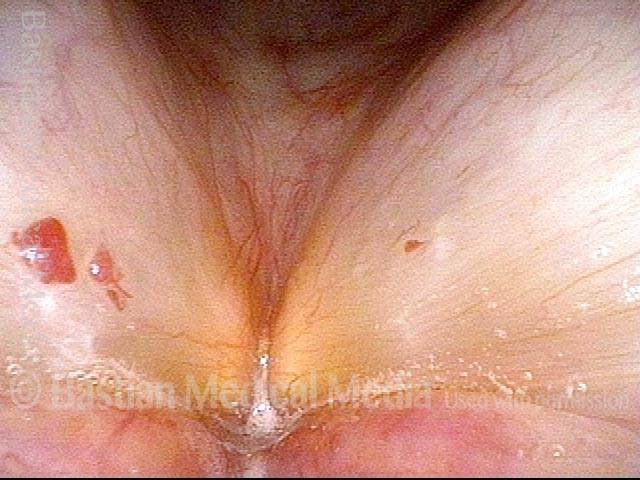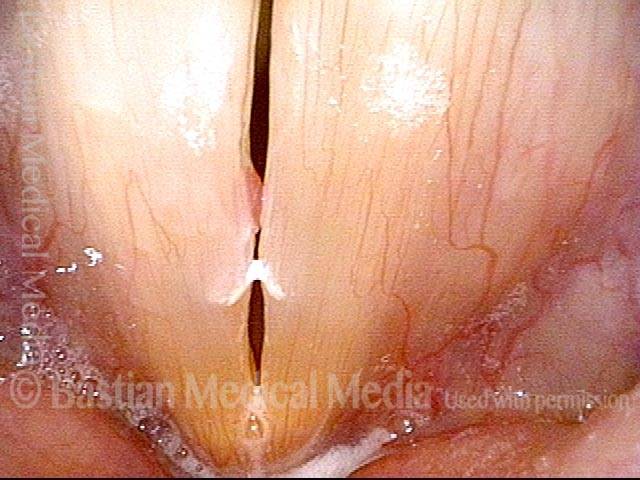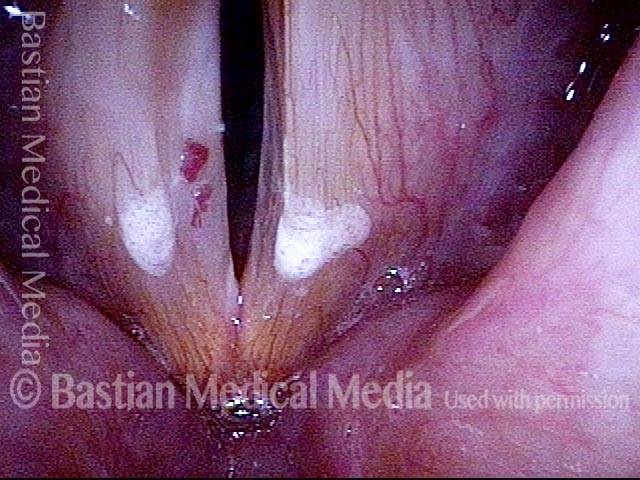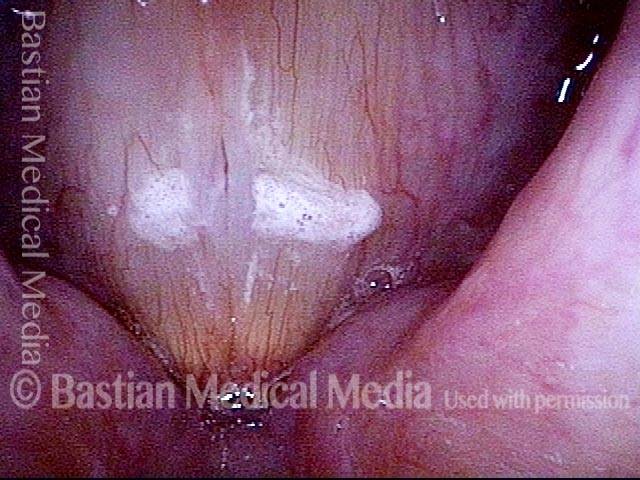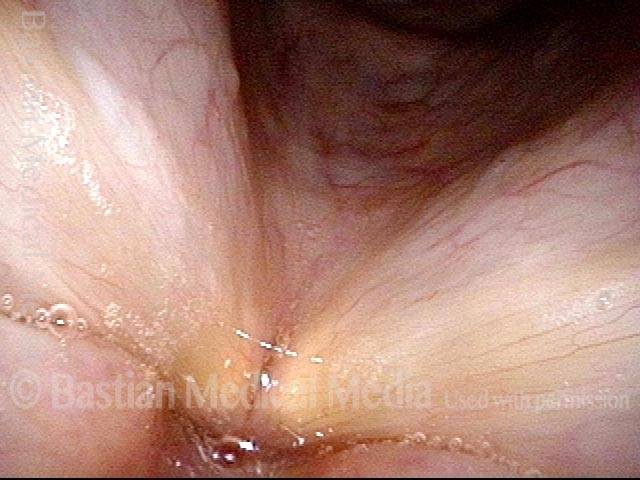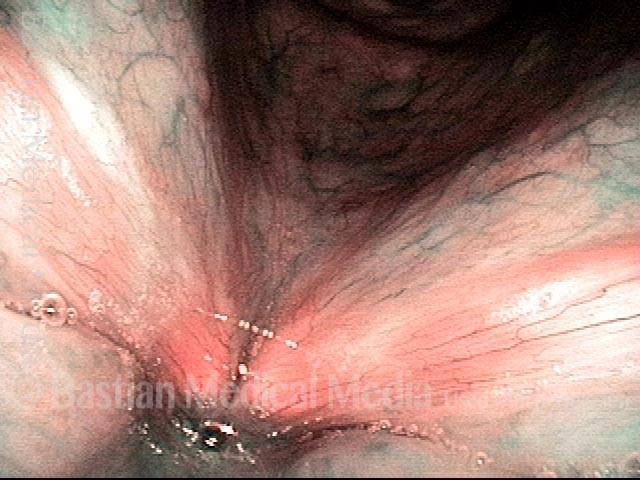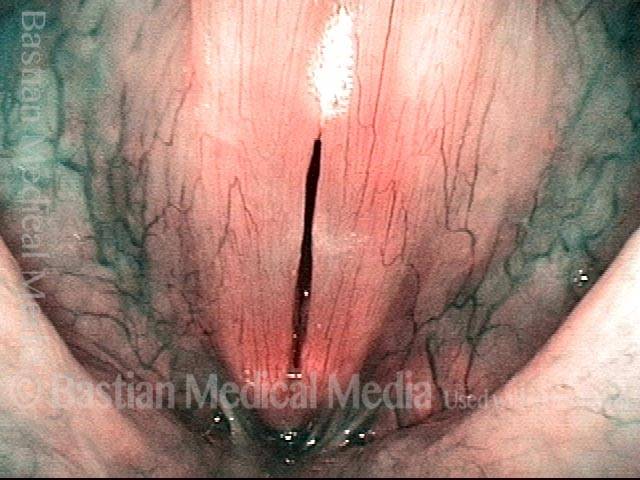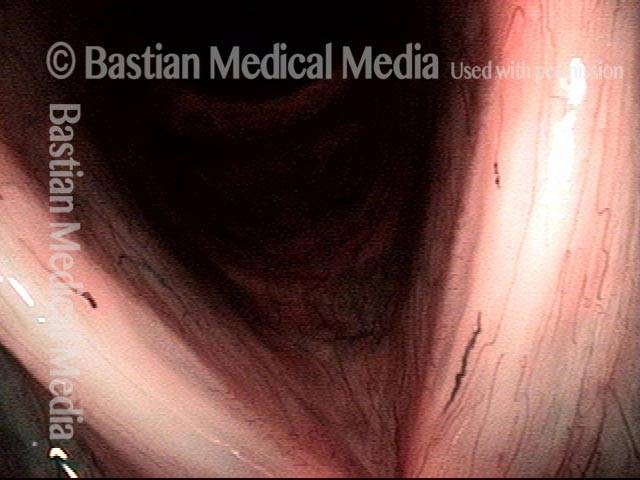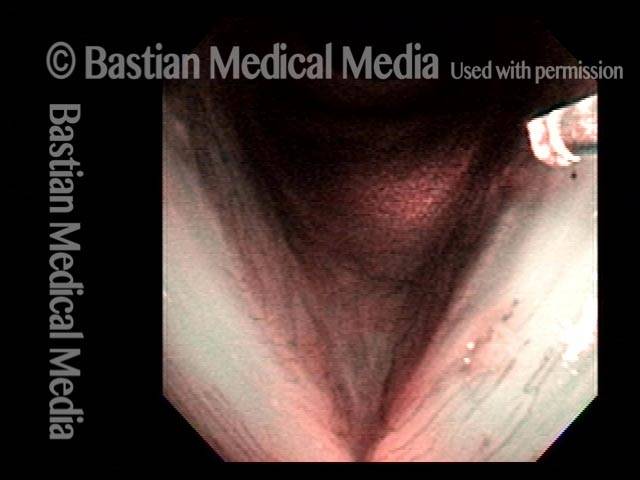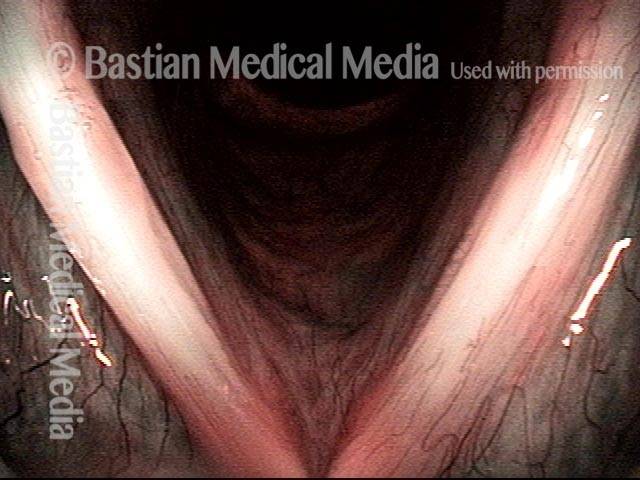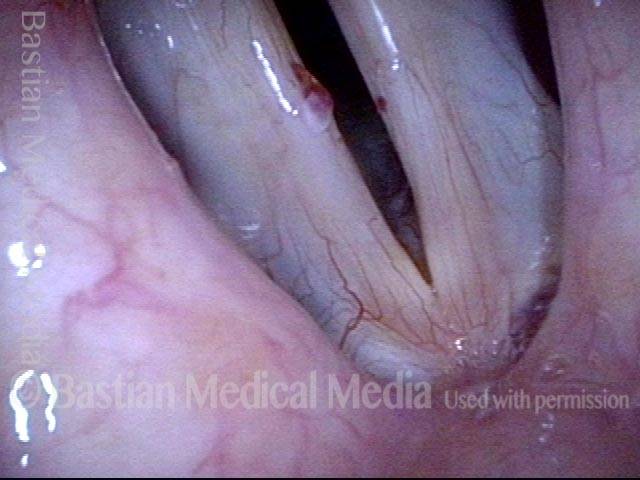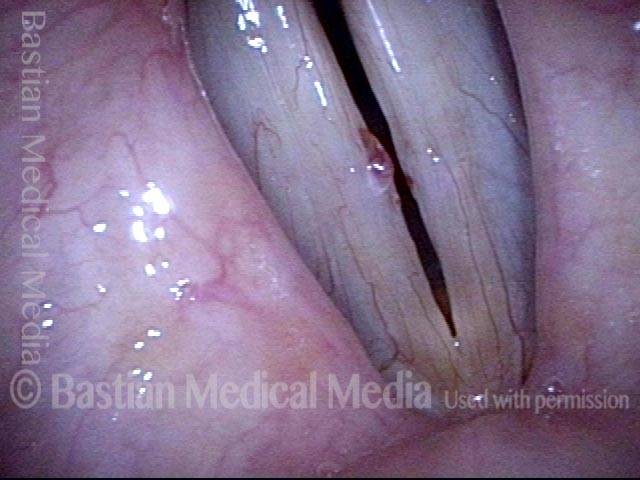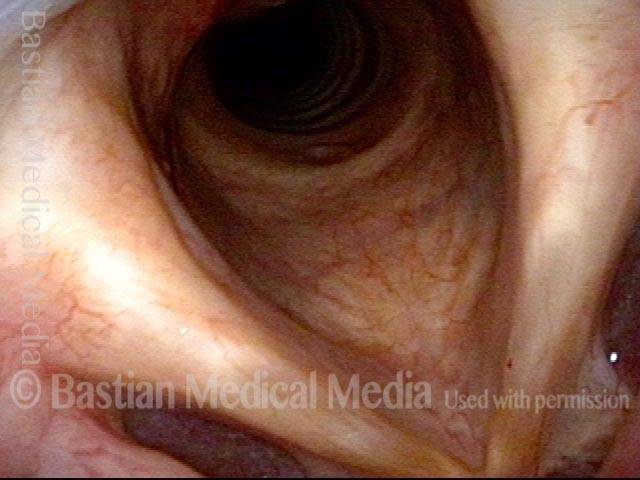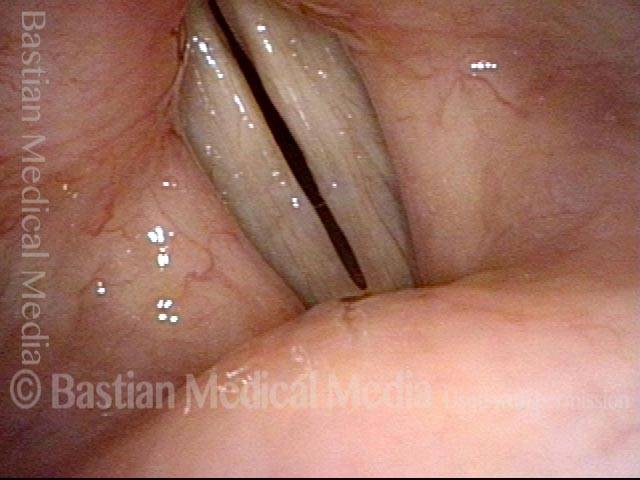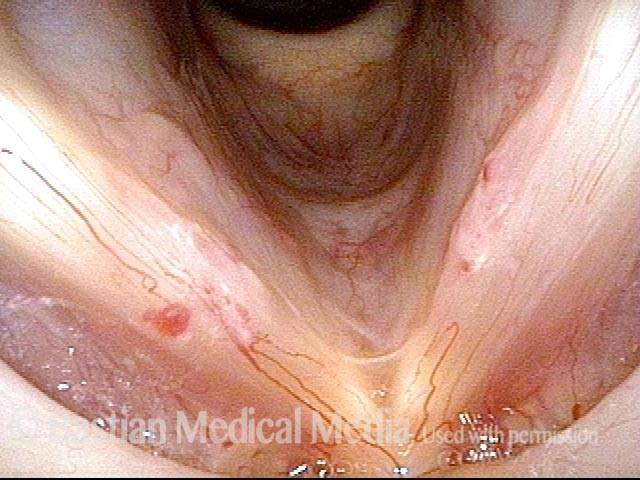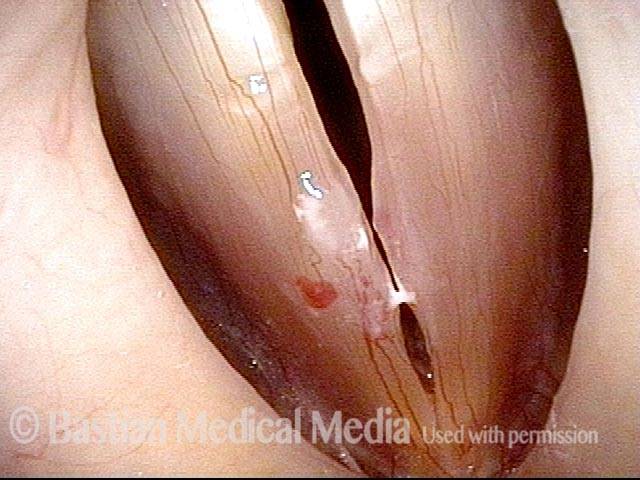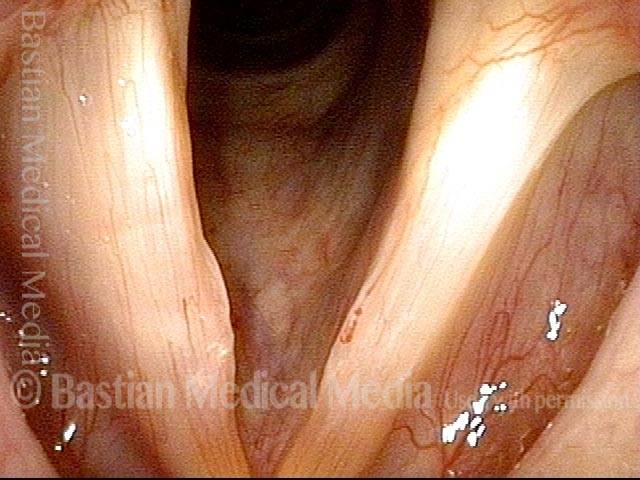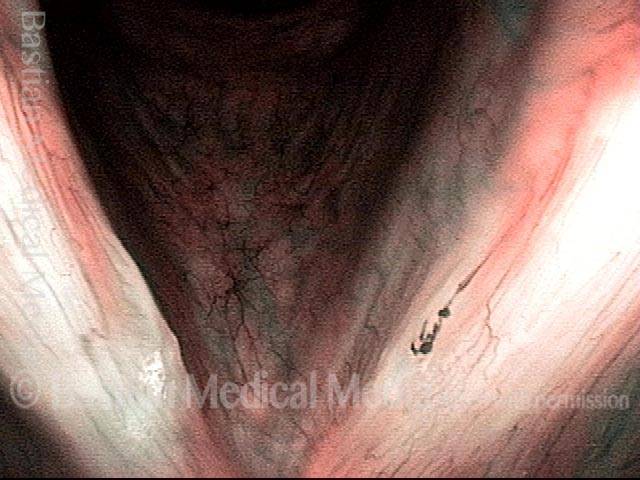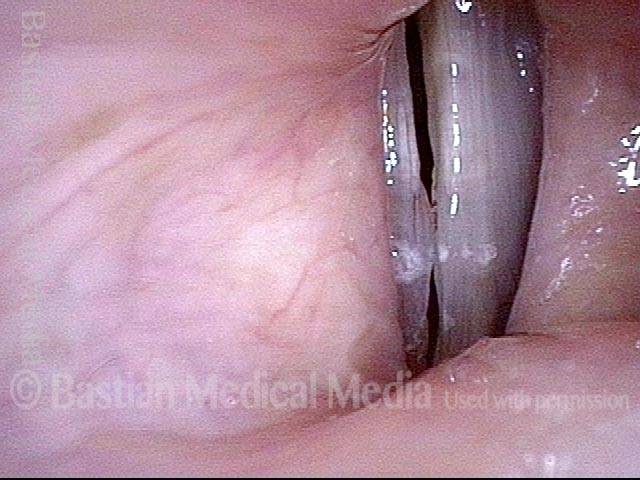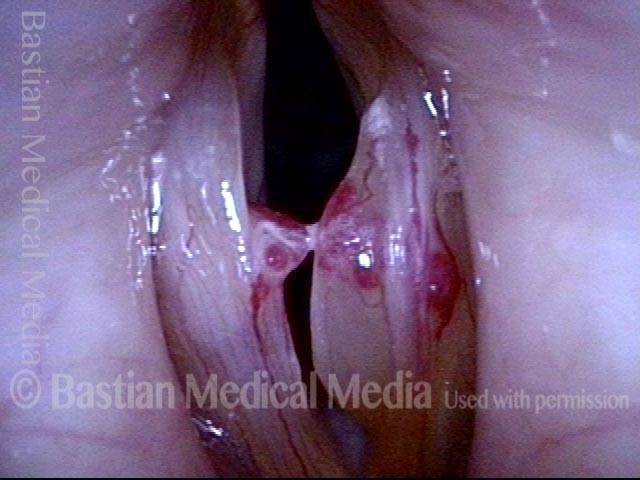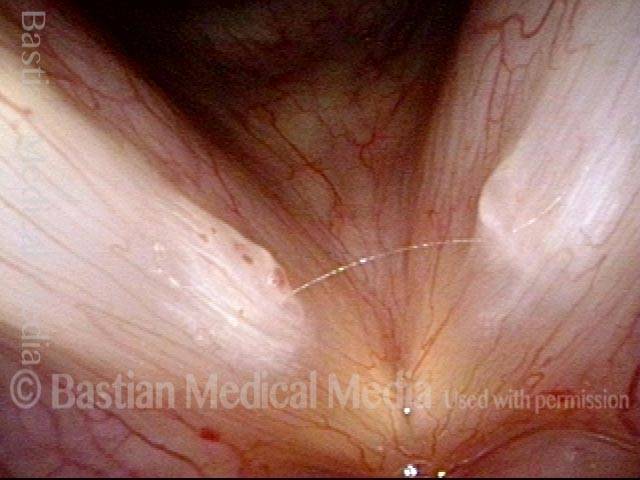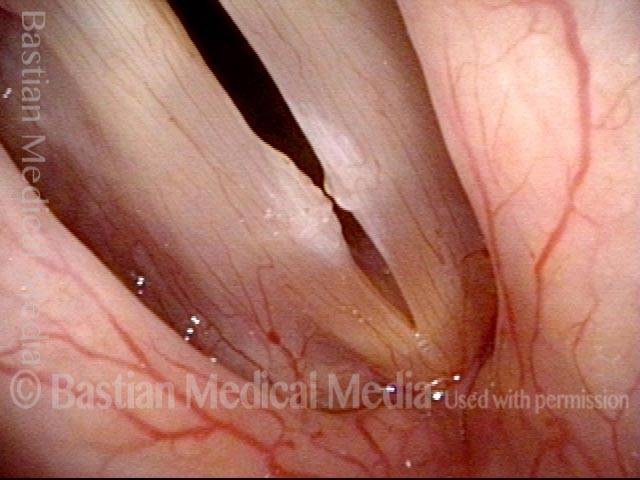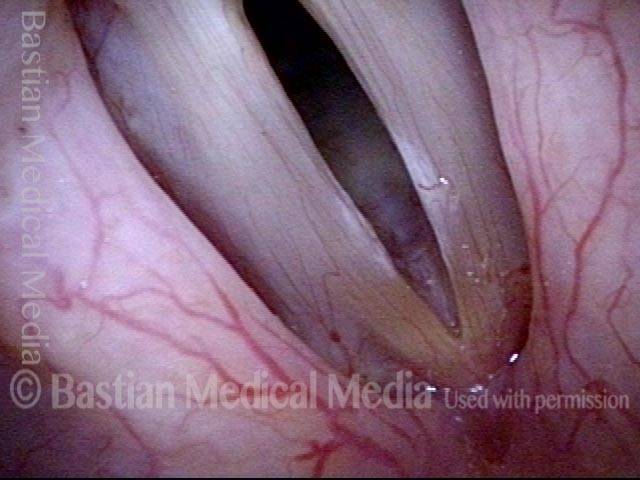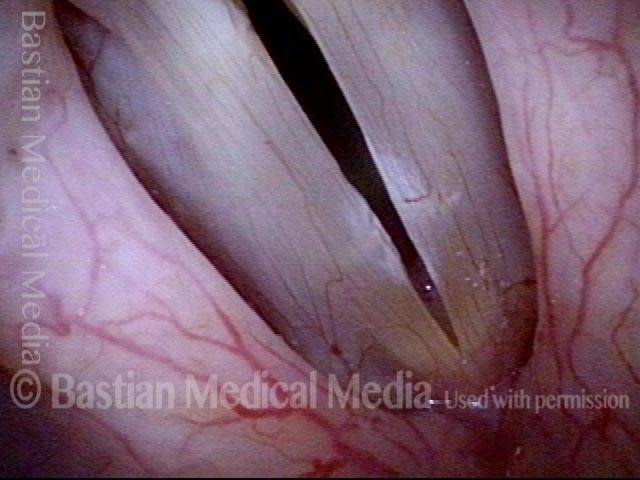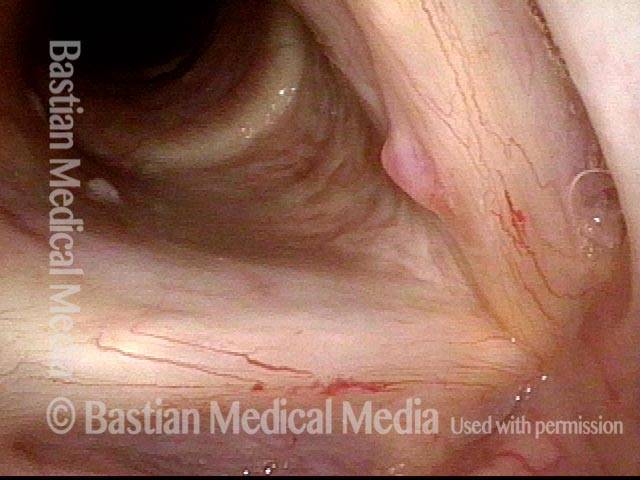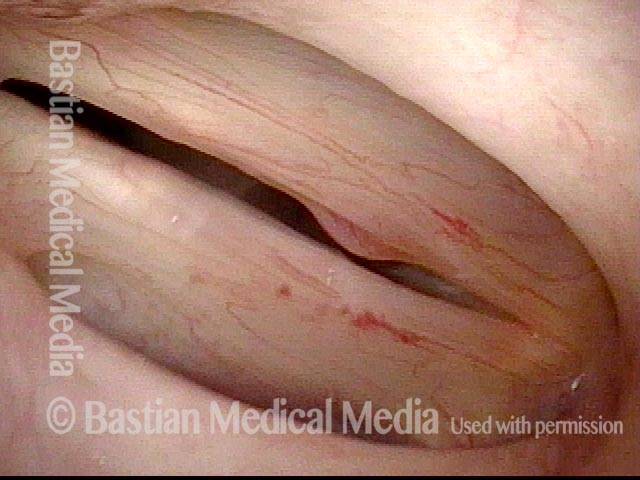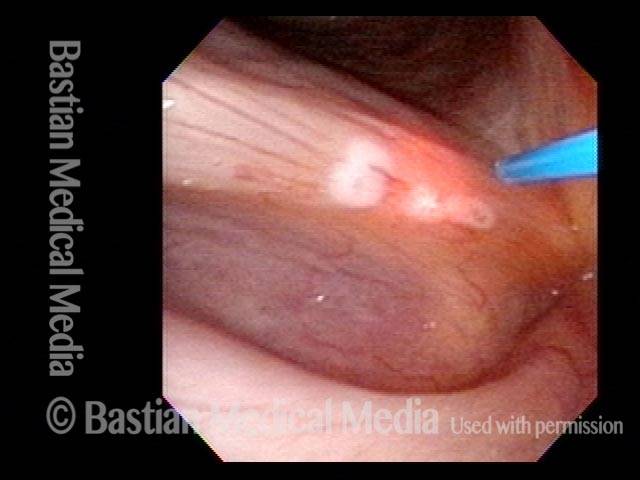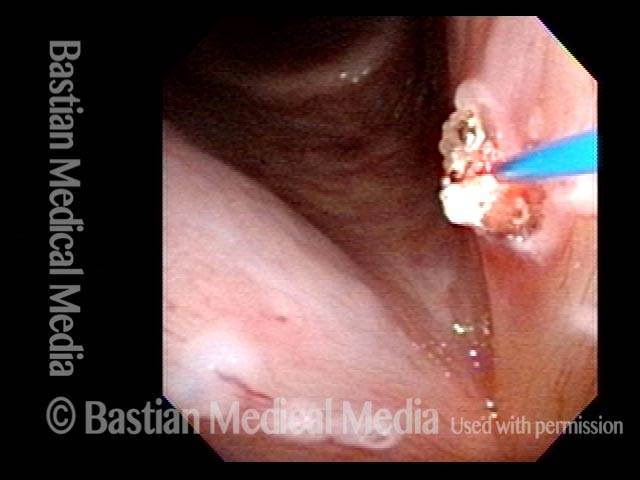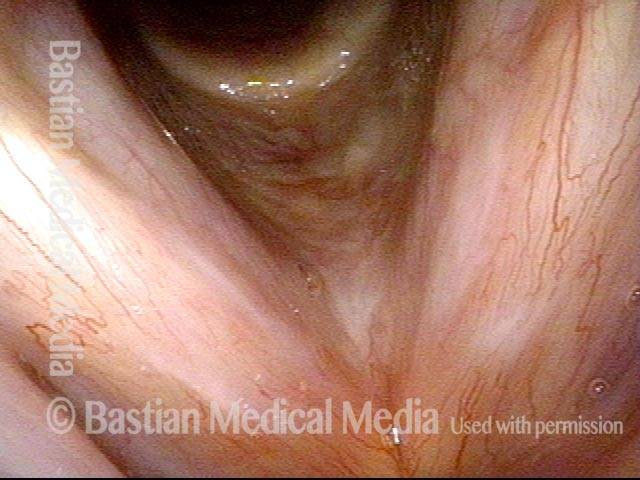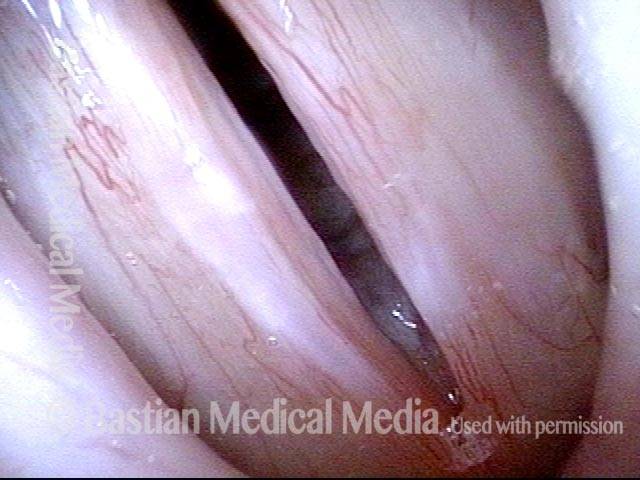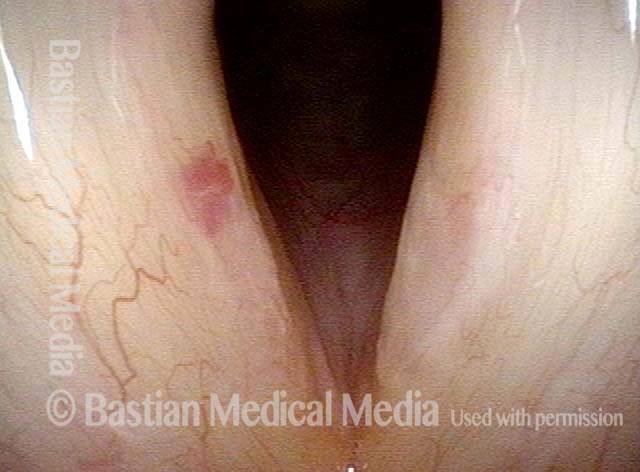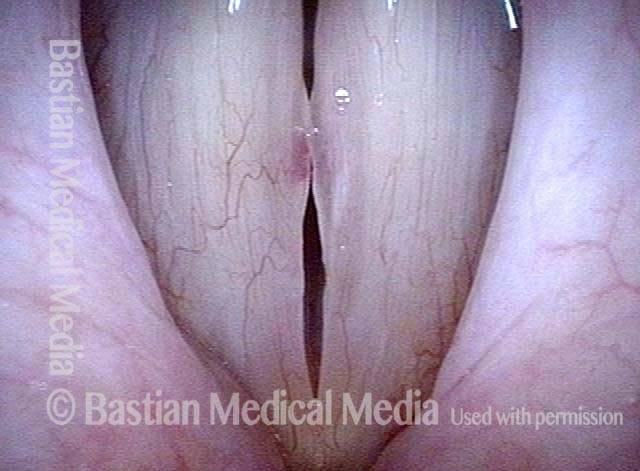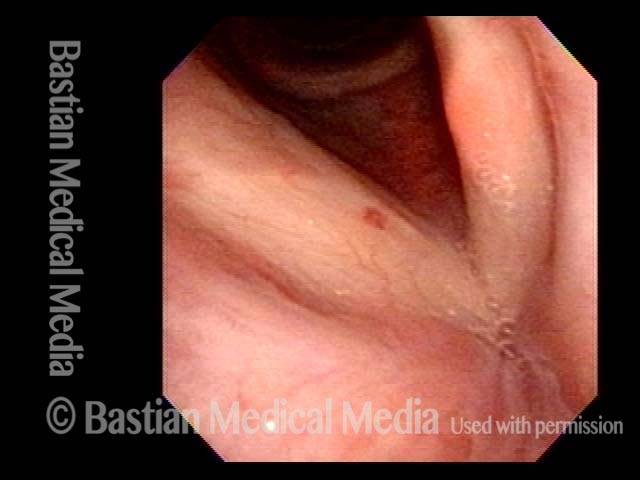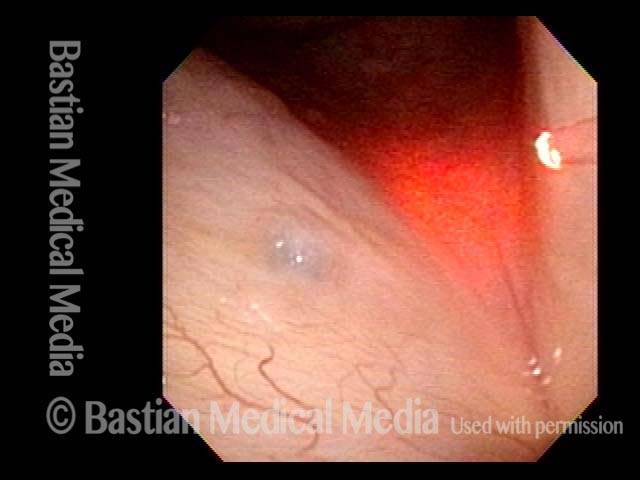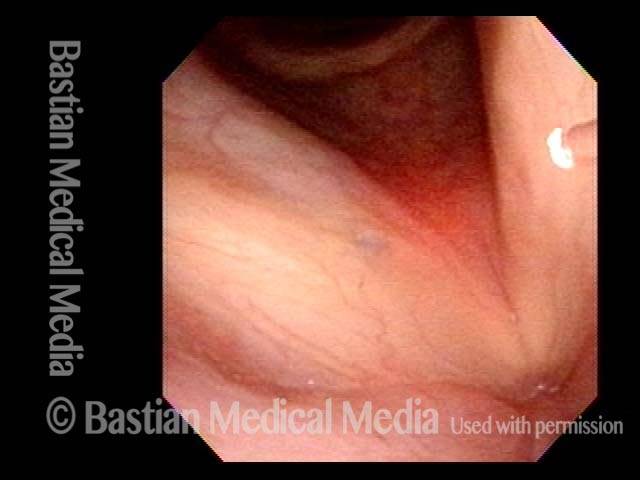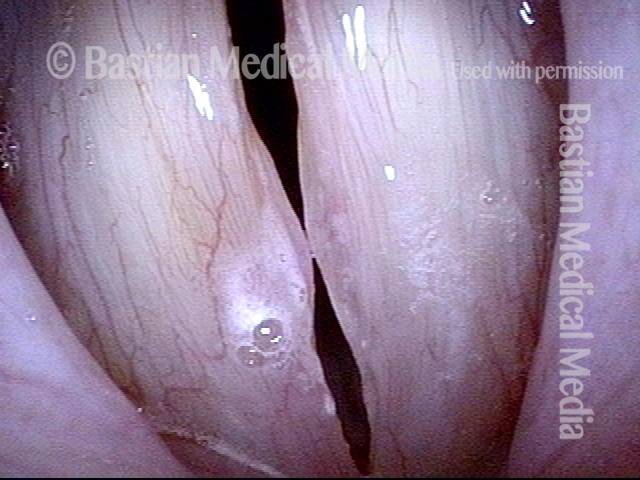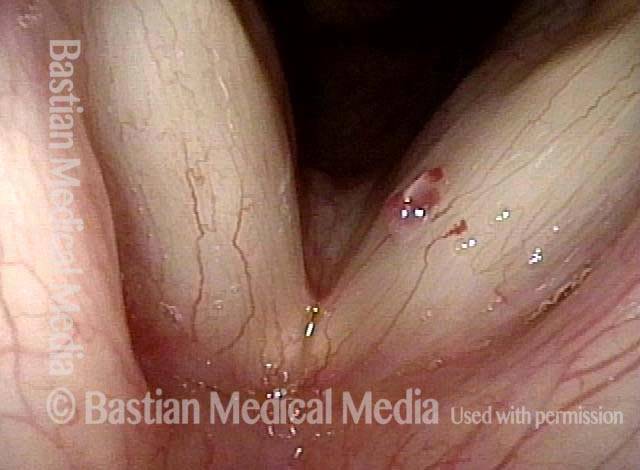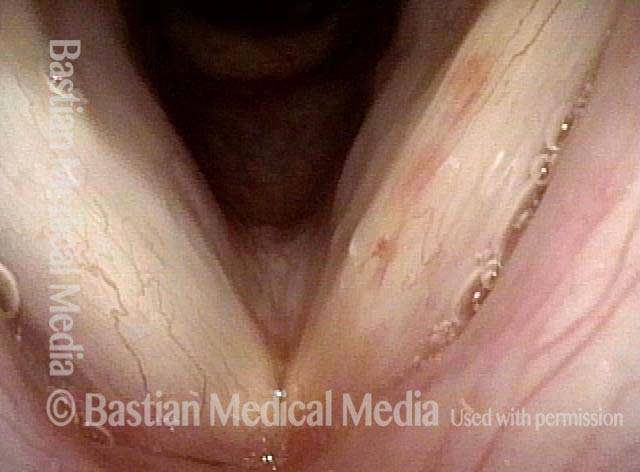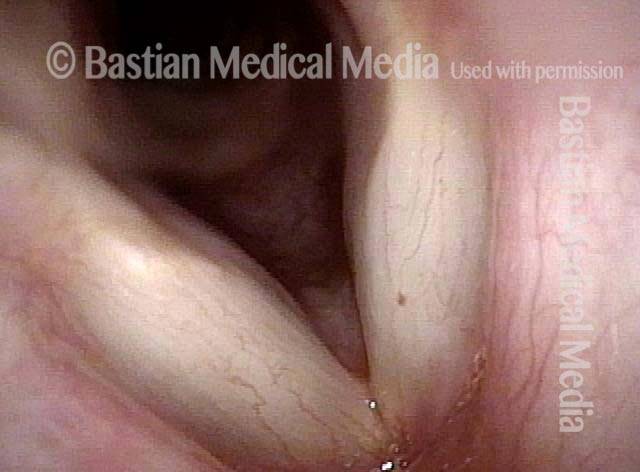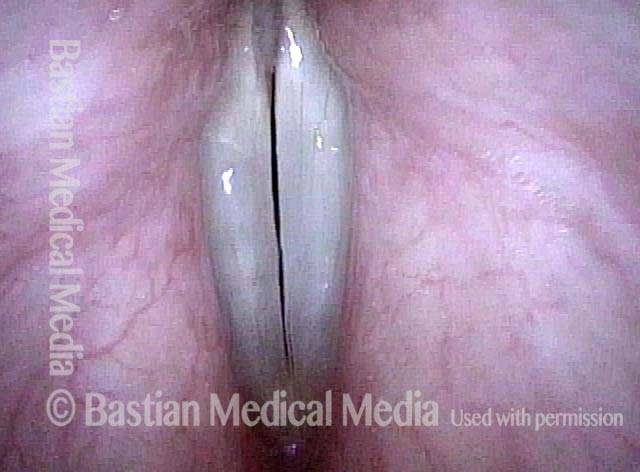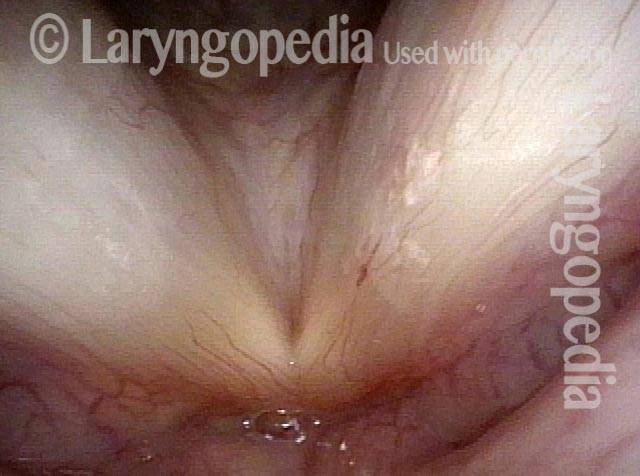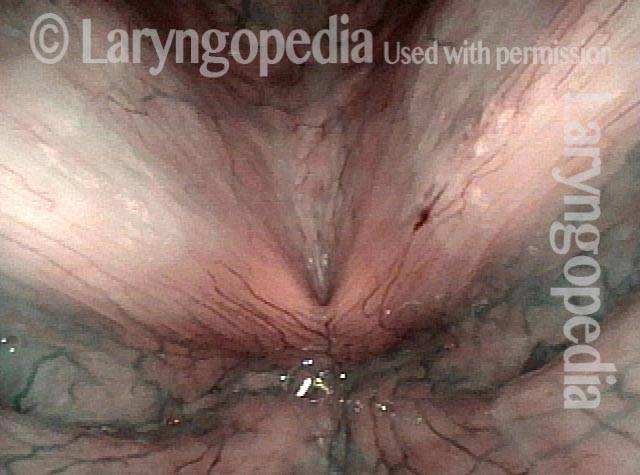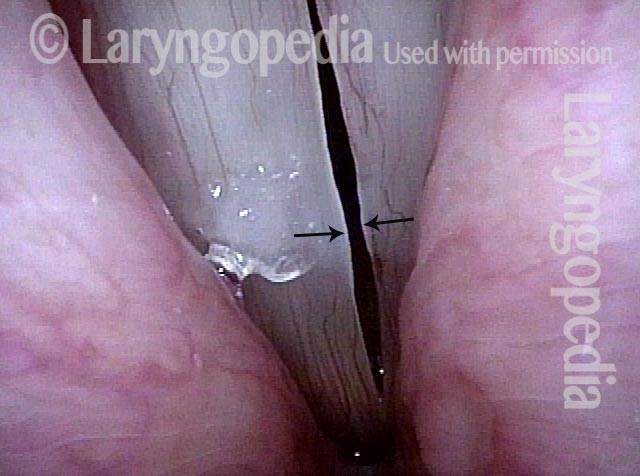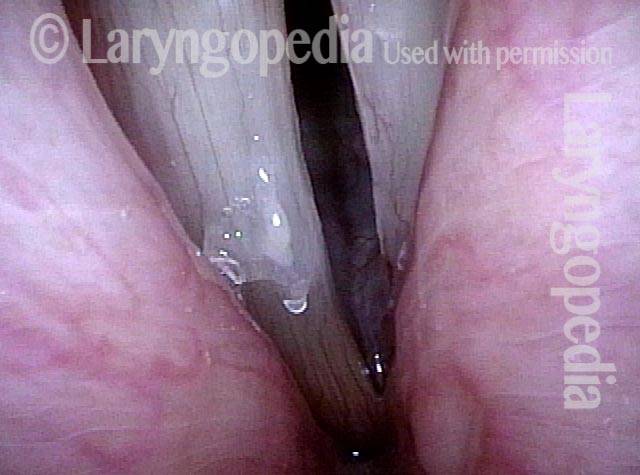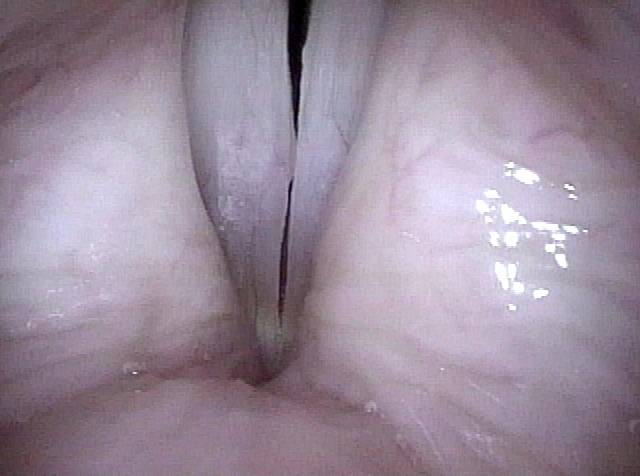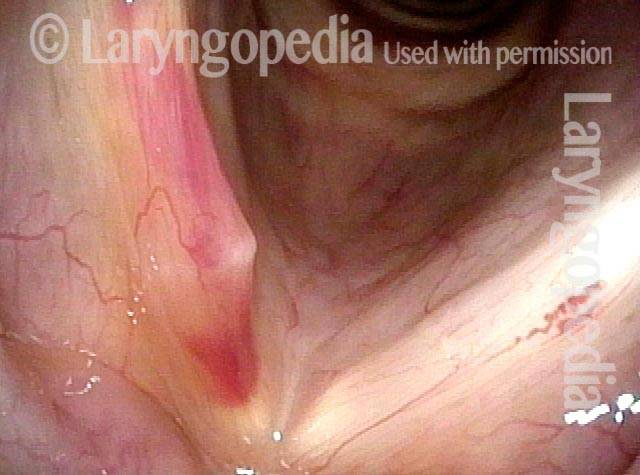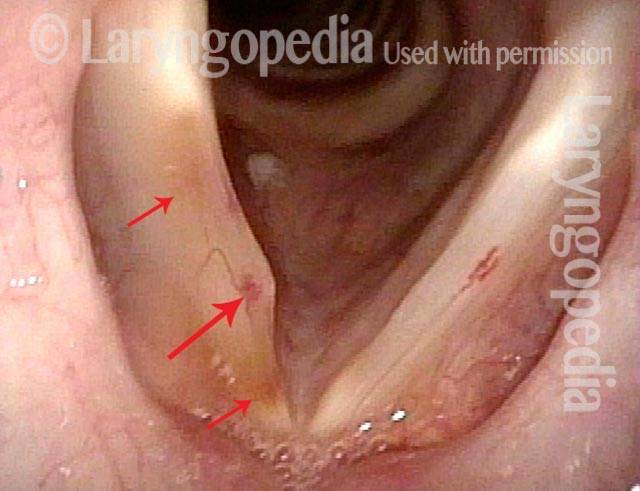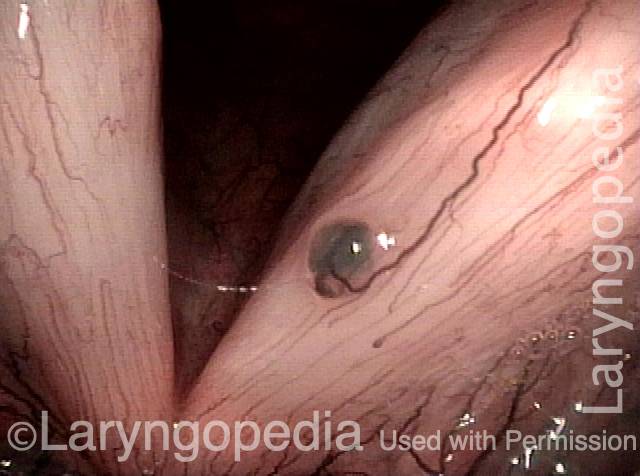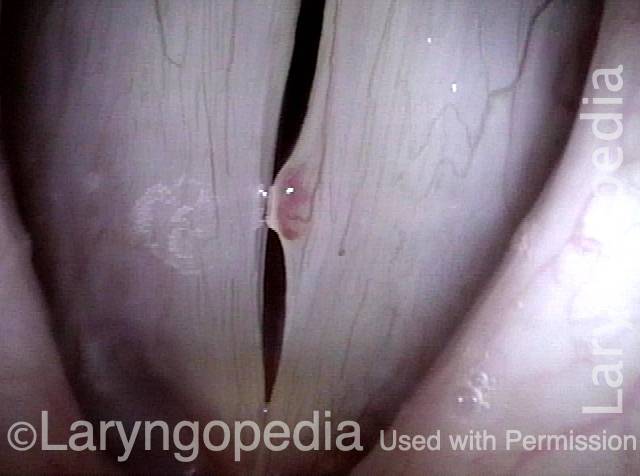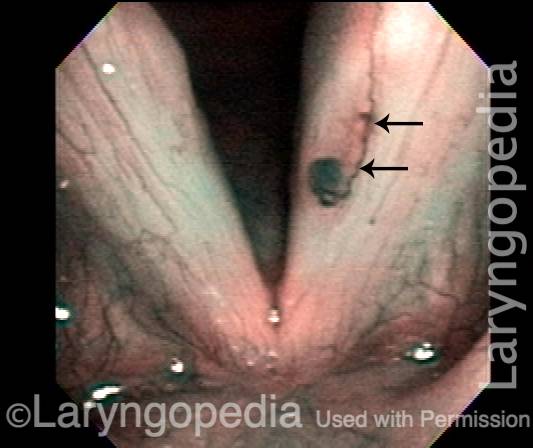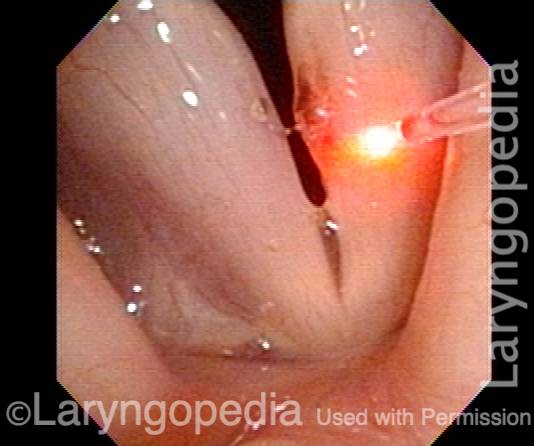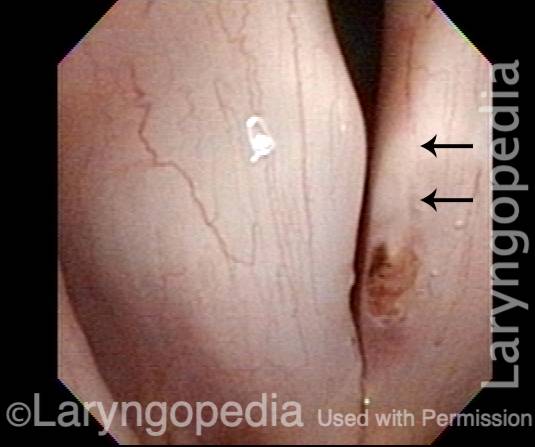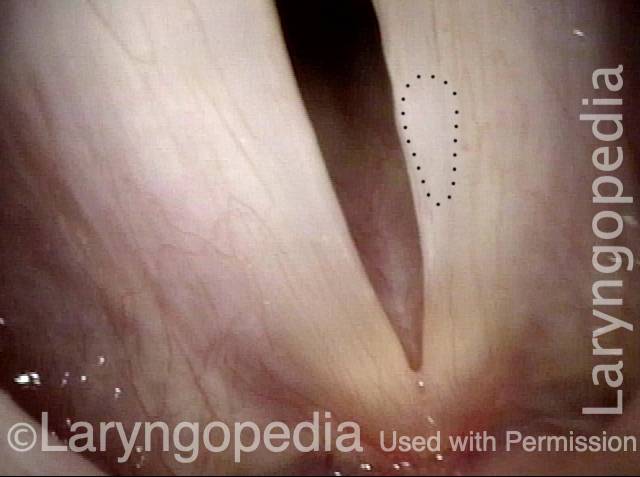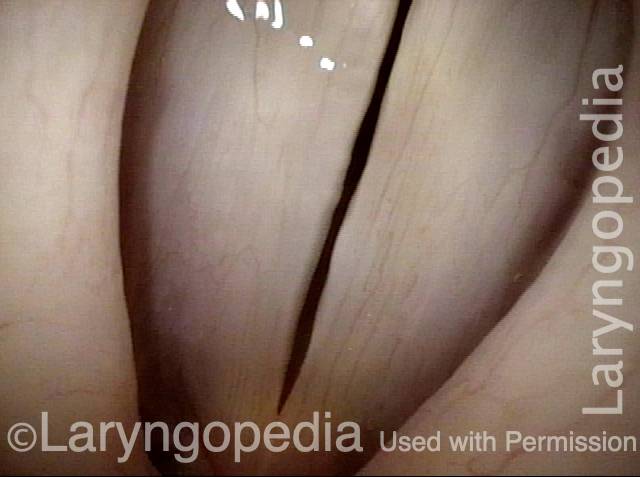Home » Multimedia Encyclopedia » Capillary Ectasia
Capillary Ectasia
Capillary ectasia is the enlargement or dilation of capillaries on the surface of the vocal cords. Some believe it to be an estrogen effect similar to “spider veins” that one might see on the legs, for example. At our practice we think of these as mainly being another manifestation of overuse of the voice, and a response to ongoing injury of the vocal cords.
Symptoms
Once established, it may cause symptoms of reduced vocal endurance and exaggerated premenstrual huskiness. Capillary ectasia may also increase the risk of vocal cord bruising (hemorrhage) and hemorrhagic polyp formation.
Treatment
Many affected individuals, however, may “coexist” with this when armed with appropriate information about this disorder and through carefully managing amount and manner of voice use. When indicated, it is easily corrected via vocal cord microsurgery.
Capillary Ectasia, before and after Laser Coagulation
Capillary ectasia (1 of 7)
Capillary ectasia (1 of 7)
Capillary ectasia (2 of 7)
Capillary ectasia (2 of 7)
Capillary ectasia (3 of 7)
Capillary ectasia (3 of 7)
Closed phase (4 of 7)
Closed phase (4 of 7)
Capillary ectasia, after laser coagulation (5 of 7)
Capillary ectasia, after laser coagulation (5 of 7)
Capillary ectasia, after laser coagulation (6 of 7)
Capillary ectasia, after laser coagulation (6 of 7)
After laser coagulation (7 of 7)
After laser coagulation (7 of 7)
Example 2
Capillary ectasia (1 of 3)
Capillary ectasia (1 of 3)
Capillary ectasia, right after laser coagulation (2 of 3)
Capillary ectasia, right after laser coagulation (2 of 3)
Capillary ectasia, 6 weeks after laser coagulation (3 of 3)
Capillary ectasia, 6 weeks after laser coagulation (3 of 3)
Capillary Ectasia and Hemorrhagic Polyp, before and after Treatment
Capillary ectasia and hemorrhagic polyp (1 of 4)
Capillary ectasia and hemorrhagic polyp (1 of 4)
Capillary ectasia and hemorrhagic polyp (2 of 4)
Capillary ectasia and hemorrhagic polyp (2 of 4)
Capillary ectasia and hemorrhagic polyp, after treatment (3 of 4)
Capillary ectasia and hemorrhagic polyp, after treatment (3 of 4)
Capillary ectasia and hemorrhagic polyp, after treatment (4 of 4)
Capillary ectasia and hemorrhagic polyp, after treatment (4 of 4)
Capillary Ectasia with Vocal Nodules
Capillary ectasia with vocal nodules (1 of 2)
Capillary ectasia with vocal nodules (1 of 2)
Capillary ectasia with vocal nodules (2 of 2)
Capillary ectasia with vocal nodules (2 of 2)
Example 2
Capillary ectasia with vocal nodules (1 of 3)
Capillary ectasia with vocal nodules (1 of 3)
Capillary ectasia with vocal nodules (2 of 3)
Capillary ectasia with vocal nodules (2 of 3)
Capillary ectasia with vocal nodules (3 of 3)
Capillary ectasia with vocal nodules (3 of 3)
Capillary Ectasia and Hemorrhagic Polyp
Capillary ectasia and hemorrhagic polyp (1 of 2)
Capillary ectasia and hemorrhagic polyp (1 of 2)
Capillary ectasia and hemorrhagic polyp (2 of 2)
Capillary ectasia and hemorrhagic polyp (2 of 2)
Vocal Nodules, Leukoplakia, and Capillary Ectasia
Vocal nodules, leukoplakia, and capillary ectasia (1 of 4)
Vocal nodules, leukoplakia, and capillary ectasia (1 of 4)
Vocal nodules, leukoplakia, and capillary ectasia (2 of 4)
Vocal nodules, leukoplakia, and capillary ectasia (2 of 4)
Vocal nodules, leukoplakia, and capillary ectasia: 6 months later (3 of 4)
Vocal nodules, leukoplakia, and capillary ectasia: 6 months later (3 of 4)
Vocal nodules, leukoplakia, and capillary ectasia: 6 months later (4 of 4)
Vocal nodules, leukoplakia, and capillary ectasia: 6 months later (4 of 4)
Capillary Ectasia and Hemorrhagic Polyp, Treated by Thulium Laser
Capillary ectasia and hemorrhagic polyp (1 of 7)
Capillary ectasia and hemorrhagic polyp (1 of 7)
Capillary ectasia and hemorrhagic polyp (2 of 7)
Capillary ectasia and hemorrhagic polyp (2 of 7)
Capillary ectasia and hemorrhagic polyp, thulium laser treatment (3 of 7)
Capillary ectasia and hemorrhagic polyp, thulium laser treatment (3 of 7)
Capillary ectasia and hemorrhagic polyp, thulium laser treatment (4 of 7)
Capillary ectasia and hemorrhagic polyp, thulium laser treatment (4 of 7)
Capillary ectasia and hemorrhagic polyp, after treatment (5 of 7)
Capillary ectasia and hemorrhagic polyp, after treatment (5 of 7)
Vocal cord margin (6 of 7)
Vocal cord margin (6 of 7)
Capillary ectasia and hemorrhagic polyp, after treatment (7 of 7)
Capillary ectasia and hemorrhagic polyp, after treatment (7 of 7)
Capillary Lake and KTP
Capillary lake (1 of 8)
Capillary lake (1 of 8)
Mucosal fatigue (2 of 8)
Mucosal fatigue (2 of 8)
Prep for laser coagulation (3 of 8)
Prep for laser coagulation (3 of 8)
KTP laser coagulation (4 of 8)
KTP laser coagulation (4 of 8)
Post laser ablation (5 of 8)
Post laser ablation (5 of 8)
Post laser ablation, distant view (6 of 8)
Post laser ablation, distant view (6 of 8)
After a weekend of vocal overuse (7 of 8)
After a weekend of vocal overuse (7 of 8)
Capillary (8 of 8)
Capillary (8 of 8)
Choral Singer’s Voice Fully Restored
Hoarse choral singer (1 of 4)
Hoarse choral singer (1 of 4)
Residual bruising (2 of 4)
Residual bruising (2 of 4)
2 months post-surgery (3 of 4)
2 months post-surgery (3 of 4)
Margins match (4 of 4)
Margins match (4 of 4)
Red Herring Capillary Ectasia and Mucosal Injuries
Ectatic capillary (1 of 4)
Ectatic capillary (1 of 4)
Ectatic capillary, narrow band light (2 of 4)
Ectatic capillary, narrow band light (2 of 4)
Margin swelling (3 of 4)
Margin swelling (3 of 4)
Bowing, atrophy, and flaccidity (4 of 4)
Bowing, atrophy, and flaccidity (4 of 4)
Ask Both Voice (via vocal phenomenology) and Larynx (via a motivated examination) to Give up their Secrets
Obvious mucosal injury (1 of 3)
Obvious mucosal injury (1 of 3)
Vocal nodules (2 of 3)
Vocal nodules (2 of 3)
Capillary ectasia (3 of 3)
Capillary ectasia (3 of 3)
The Evolution of Vocal Cord Bruising and Emergence of a Vulnerable Capillary
Margin swelling and bruising (1 of 2)
Margin swelling and bruising (1 of 2)
Six weeks later (2 of 2)
Six weeks later (2 of 2)
Pulsed KTP Laser Treatment of Vascular Abnormalities in a Singer
Ectatic capillary (1 of 7)
Ectatic capillary (1 of 7)
Polyp (2 of 7)
Polyp (2 of 7)
Feeding capillary (3 of 7)
Feeding capillary (3 of 7)
Glass fiber (4 of 7)
Glass fiber (4 of 7)
At the conclusion of the laser procedure (5 of 7)
At the conclusion of the laser procedure (5 of 7)
Blanched area (6 of 7)
Blanched area (6 of 7)
Polyp is gone (7 of 7)
Polyp is gone (7 of 7)
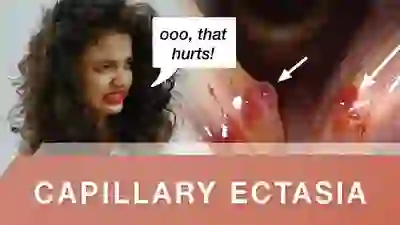
Capillary ectasia (including KTP laser treatment)
This video illustrates the various causes of capillary ectasia and the treatment options that are available to patients, including pulsed-KTP laser treatment.
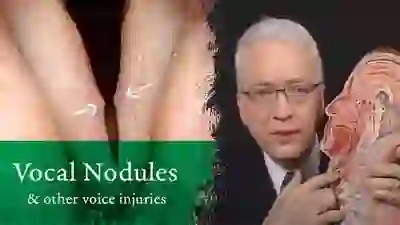
Nodules and Other Vocal Cord Injuries: How They Occur and Can Be Treated
This video explains how nodules and other vocal cord injuries occur: by excessive vibration of the vocal cords, which happens with vocal overuse. Having laid that foundational understanding, the video goes on to explore the roles of treatment options like voice therapy and vocal cord microsurgery.
